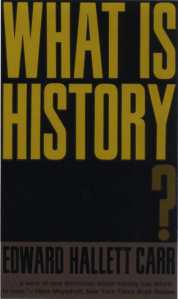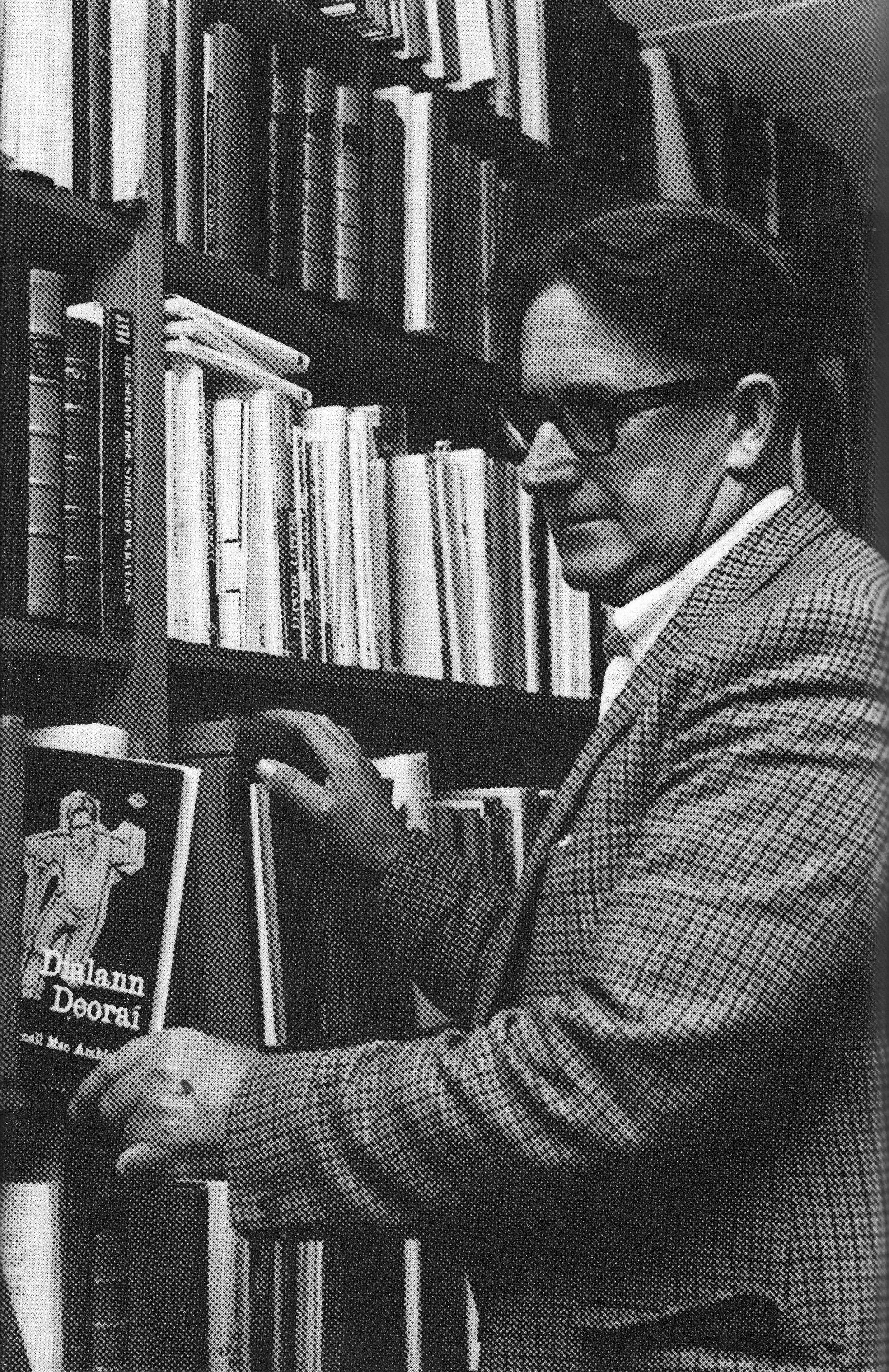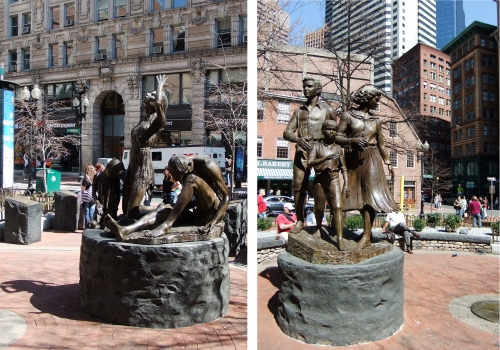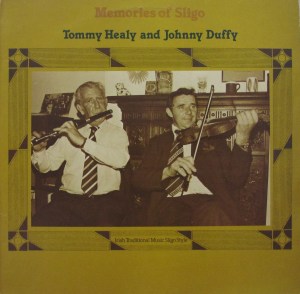Oral History in Ireland: A Status Update
A conference review originally posted on The Dustbin of History, 16 September 2014.
 Last weekend (12-13 Sept.) I attended the second conference of the Oral History Network of Ireland, held in Kilkenny. Founded in 2010, OHNI has held a number of events to bring together oral history practitioners and to further develop the field across the nation. One of the unique characteristics of this conference, and indeed of the network, is the encouragement of participation by those working outside third-level education. Though I did hear one complaint that it still feels dominated by academics, it is much less so than most events of this type. The workshops, sessions, and discussions over the course of two days covered a wide range of topics and themes including ethics, interviewing, communities, digital media, heritage, and history (the full programme and abstracts are available here). Lots could be said about all of these, but I will briefly touch on issues of community and access that I heard raised at multiple points during the weekend.
Last weekend (12-13 Sept.) I attended the second conference of the Oral History Network of Ireland, held in Kilkenny. Founded in 2010, OHNI has held a number of events to bring together oral history practitioners and to further develop the field across the nation. One of the unique characteristics of this conference, and indeed of the network, is the encouragement of participation by those working outside third-level education. Though I did hear one complaint that it still feels dominated by academics, it is much less so than most events of this type. The workshops, sessions, and discussions over the course of two days covered a wide range of topics and themes including ethics, interviewing, communities, digital media, heritage, and history (the full programme and abstracts are available here). Lots could be said about all of these, but I will briefly touch on issues of community and access that I heard raised at multiple points during the weekend.
Rob Perks bravely gave both a workshop and a keynote address on Friday afternoon. The former, ‘Archiving oral history recordings’, drew extensively on his work as lead curator of Oral History at the British Library and summarized workflow processes and best practices. After a short break for the wine reception, Rob was back for his keynote, ‘The development of community oral history in the UK: reflecting on the issues and challenges’. It took a broad view of the discipline, beginning with nineteenth-century social investigators, dialect studies, and folklore, and moving on to George Ewart Evans and the BBC Radio Ballads in the post-Second World War period. The main part of his address focused on two waves of community oral history in the UK: the 1970s to ‘80s and from the 1990s on. The first was characterized by local activist groups and publications and through this many of the current generation of oral historians, including Rob himself, immersed themselves in the field. The second wave has been characterized by the availability of Heritage Lottery funding as well as broadening definitions of ‘community’. These trends raise questions and issues that apply beyond the UK context:
- ‘Celebratory impulse’[1]: Who or what is the community? Asking this question involves taking risks, but is necessary to delve beneath the surface.
- ‘Shared authority’[2]: This is definitely a laudable goal, but is it achievable?
- Avoiding ‘one source history’: How can we compare and contrast oral testimony with other forms of primary sources and place local history in a wider context?
- Re-use of community oral history for purposes not initially foreseen: What documentation is kept? Who has control over the sources? Who will have access?
Overall the trend in the UK has been from community oral history to oral histories of elites, whereas US work has primarily followed the opposite trajectory, but these questions can apply to all projects in different types of ‘communities’.
The issue of who or what constitutes a community also arose in the discussion at the end of the panel ‘working-class communities, trade unions, and politics’ (with presentations from Mary Muldowney, Liam Cullinane, and John Gibbons). How are communities constituted – by geographical area, by the way in which their members speak of them, or by exclusion? Oral histories of working-class communities often focus on social networks, mutual assistance, and a sense of solidarity, and while the reality of these attributes is undoubted, panel attendees also highlighted the existence of people in the same geographical proximity or industry who either chose to separate themselves or were deliberately excluded. The former case included families who felt they had dropped in social status and wanted to maintain an outward ‘respectability’, and the latter case included strikebreakers. In addition, the study of an urban working-class neighbourhood in the 1930s, for example, might include those who had since geographically or economically moved out of that community. But while these types of people should be part of the historical narrative, their experiences can prove difficult to capture, because they themselves may decline to be interviewed and others within the community may avoid mentioning or questioning these divisions.[3]
Presentations in the final panel of the conference ‘the place of oral history in the Irish heritage landscape’ addressed two main issues: funding and the place of oral history within definitions (legal and otherwise) of heritage in Ireland. The latter arguably influences the ability to gain the former. However, overall the panel seemed based on the assumptions that oral histories are collected by local community groups tied to distinct geographical areas that therefore fall under the remit of a county council heritage officer. This evidenced a general failure to acknowledge, reflect on, or respond to the broader definitions of community raised by Rob Perks and others during the course of the conference. What if an oral history project centres on a community at a national or international level? My own work extends across the Irish diaspora, so where does it fit? If funding is seen as coming primarily from local sources, this severely limits projects with a broader scope.
The final point I would like to make relates to preservation and access: one commentator at the end of the panel suggested that OHNI might ensure that individuals or groups applying for or receiving funding adhere to standards and best practices. The network also has a role to play in ensuring that policies exist for archiving and access at local and national level. In a 1997 report on oral archives historian Diarmaid Ferriter wrote that ‘haphazard, incomplete and inconsistent are the words that spring to mind concerning attitudes and practices relating to the collection and preservation of oral archival material’ in Ireland.[4] Sadly, this remains the case, as no national institution has taken on a role in collecting or disseminating oral sources equivalent to that of the British Library in the UK. OHNI lists as one of its key objectives, ‘to be actively involved in archiving initiatives by promoting best practice and long term sustainability of voice archives’, but much remains to be done in this area. I have high hopes for the future!
[1] Linda Shopes, ‘Oral History and the Study of Communities: Problems, Paradoxes, and Possibilities’, Journal of American History, vol.89, no.2 (Sept. 2002), pp.588-98.
[2] Michael Frisch, A Shared Authority: Essays on the Craft and Meaning of Oral and Public History (SUNY Press, 1990).
[3] An earlier conference panel suggested some possible remedies: Ultan Cowley discussed a group who feel excluded from Ireland – Irishmen who spent their lives working as navvies in England – and the problematic relationship they have with their homeland; while the GAA Oral History Project focused primarily on those who maintained involvement in the organization, Alan Noonan tackled its darker side in examining an event in the 1950s that had a bitter and alienating effect for many local players involved.
[4] Diarmaid Ferriter, ‘Oral Archives in Ireland: A Preliminary Report’, Irish Economic & Social History, vol.25 (1998), p.91.









